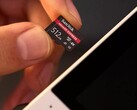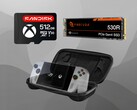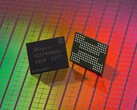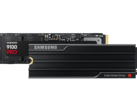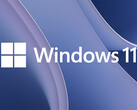SanDisk has introduced its new WD Blue SN5100 NVMe drives, apparently targeting creators and power users who require high performance for large projects, fast application launches, and quick file transfers. SanDisk reports up to a 30 percent performance increase over the previous WD Blue generation.
Building on that, the drive uses PCI Express 4.0 and the M.2 2280 format. It features a DRAM-less design with Host Memory Buffer and now uses BiCS8 quad-level cell NAND for all sizes. SanDisk's nCache 4.0 stages writes in single-level cell blocks, then moves data to a quad-level cell when the drive is idle. Its single-sided design also makes it a good fit for laptops.
In terms of performance, the 1 TB and 2 TB models can achieve read speeds of up to 7,100 MB/s and write speeds of up to 6,700 MB/s. The 500 GB version still offers read speeds of up to 6,600 MB/s. For random performance, you get about 1 million reads and 1.3 million writes IOPS. Compared to the WD Blue SN5000, SanDisk claims this results in up to 29 percent faster read speeds and up to 34 percent faster write speeds.
Despite these increases in speed, endurance ratings remain unchanged: 300 TB written for 500 GB, 600 for 1 TB, 900 for 2 TB, and 1,200 for 4 TB. Warranty coverage remains at 5 years. SanDisk also bundles Acronis True Image for easy cloning, and its Dashboard utility lets you monitor health, performance, and firmware.
Curious about real-world speeds? The interface you use can make a significant difference. For example, if you put a 2 TB SN5100 in a Thunderbolt enclosure with APFS formatting, you could see speeds of approximately 3,125 MB/s for writes and 3,057 MB/s for reads. However, if you're using a standard USB 3.1 Gen 2 enclosure, expect speeds of around 1,000 MB/s, as the connection limits performance.
The SN5100 is clearly faster than the SN5000's top 4 TB model, which offers up to 5,500 MB/s of read speed and 5,000 MB/s of write speed. However, the price has also gone up. Suggested prices are $54.99 for 500 GB, $79.99 for 1 TB, $149.99 for 2 TB, and $299.99 for 4 TB. This represents a price increase of approximately 22 to 36 percent compared to the previous generation for the same capacities.
Source(s)
TechPowerUp (in English)





